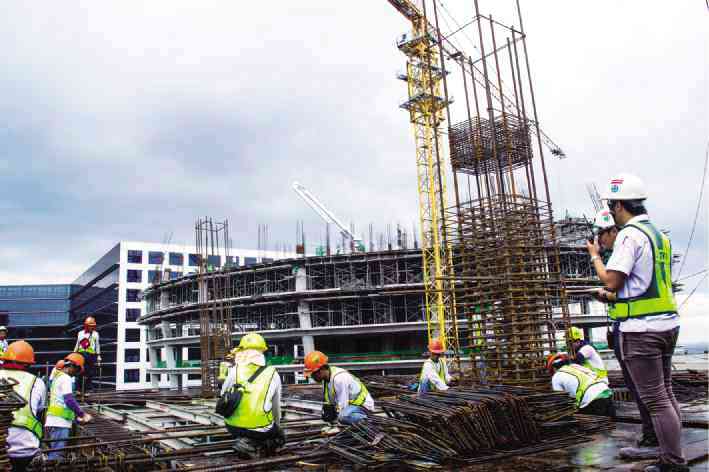
One of the sectors seen to hold growth opportunities for Nordic companies include the construction and infrastructure industry.
The Philippines’ continued viability as an investment destination seems to be too attractive for the foreign business community to ignore.
Despite the political noise and uncertainties that may have triggered some investors to adopt a wait-and-see stance, there are others who remained willing to tap the growth potential of key local industries.
Bo Lundqvist, president of the Nordic Chamber of Commerce of the Philippines (NordCham Philippines), said in the group’s 2017 Country Report that the current administration’s 10-point agenda “presents tremendous opportunities for stronger Nordic-Philippine economic ties, specifically in the sectors of infrastructure development, ICT, energy, healthcare, and education.”
“The Philippines remains to be a viable investment destination. In spite of the prevailing global economic uncertainty, the country’s GDP (gross domestic product) is on a growth streak, posting an average of 5-7 percent in the last five years. Inflation, likewise, remains subdued in the last few years,” the report further stated.
According to NordCham Philippines, other factors that make the Philippines an even more attractive hub for trade and investment include its young and educated population; strategic geographical location; abundant natural resources; and developing infrastructure.
Sustained growth
One of the sectors deemed to hold growth opportunities for Nordic companies include the Philippine construction and infrastructure industry.
According to the NordCham report, this industry is expected to “sustain its strong growth in the Philippine market largely attributed to private construction—residential and non-residential undertakings—and the rolling out of the administration’s flagship infrastructure projects under the Private-Public Partnership scheme.
“By yearend, public and private sector construction activities is seen to reach P1.7 trillion or estimated at 10.9 percent growth. Last year, the industry contributed 5.8 percent at constant prices to the Philippine economy and was responsible for 6.6 percent total employment as of October 2015,” the report stated.
“Despite the expected moderation of public construction after 2015 due to the upcoming 2016 elections and the change of national leadership, the infrastructure industry will continue to grow especially in the energy and utilities segments, which are forecasted to expand at an annual average of 7.6 percent between 2015 until 2019,” it further disclosed.
Growth opportunities
So what are these opportunities? In its report, the NordCham noted that the target of the Philippine government, through the Housing and Land Use Regulatory Board (HLURB), to construct one million housing units by end of 2016 with over 300 condominium projects in Metro Manila targeted as mid-market segment.
For PPP projects, there are 11 big ticket infrastructure projects that have been awarded as of November 2015, which include the P64.9 billion LRT Line 1 Cavite Extension and Operations and Management; P55.51 billion Cavite-Laguna (Cala) Expressway; and the P17.52 billion Mactan-Cebu International Airport Passenger Terminal Building, among others.
There are also at least 40 other PPP projects under different stages of procurement and bidding that are in the pipeline of public infrastructure projects. Such projects are expected to offer different growth opportunities for Nordic companies or NordCham members to tap.
Meanwhile, other industries deemed to have growth potential include the IT-business process management (IT-BPM); renewable energy; healthcare; and manufacturing.
Challenges
There remained, however, challenges that the business community hopes to be addressed by the government.
These challenges include the economic restrictions under the 1987 Constitution, which effectively limits foreign participation in certain industries; government’s underinvestment in physical infrastructure; bureaucracy, as brought about by repetitive, complex, and often conflicting orders and procedures of government agencies on business permits and licensing, entry approval, and an array of regulations; and corruption, among many other hurdles.
Indeed, there remains a strong appetite among foreign investors to latch on the growth opportunities in the country.
However, the government must also do its part to ensure that the strong investor momentum today is sustained by addressing the lament of foreign investors—hurdles that, for some, continue to stunt the true growth potential of the Philippine economy.

